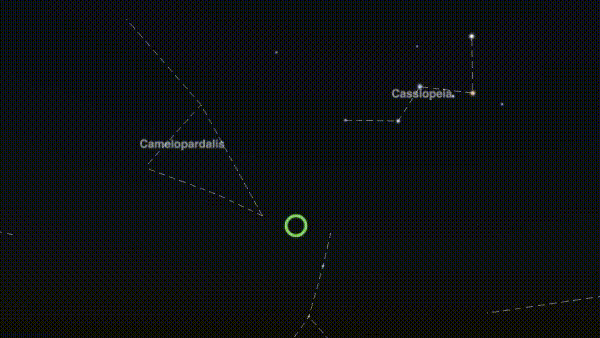How to See the Perseids 2022
With up to 100 shooting stars per hour, the peak of the Perseids is a night to look forward to. Alas, the Full Moon shines bright this year, making it a bit more challenging to see the shooting stars.

Our Interactive Meteor Shower Sky Map shows the Perseids’ radiant position in the night sky above New York on the night of August 12, but you can see the shooting stars in all parts of the sky.
©timeanddate
A Friday-Night Show
The Perseids peak on the night of Friday, August 12, and into the early hours of Saturday, August 13.
However, the brightness from the Full Moon will make it more difficult to see the shooting stars.
The best time to see the Perseids
60-100 Meteors per Hour
The Perseids are one of the brighter meteor showers of the year. During the yearly peak, you can see 60 to 100 meteors per hour. From around mid-July, you can start seeing some sporadic shooting stars, which can last toward the end of August.
The Perseids are named after the Perseus constellation because the meteors seem to radiate from that area in the sky. However, during a meteor shower, you can see shooting stars in all parts of the night sky.

The Perseids Meteor Shower as seen from Ontario, Canada. The Perseids produce up to 100 shooting stars per hour.
©iStockphoto.com/Jorge Figueiredo
Lie Down and Look Up
Any stargazer would tell you that darkness and patience are the keys to seeing shooting stars. Find a place with little light pollution, and get comfortable.
Dress for the weather, bring something to lie on like a blanket and then wait. Your eyes need to adjust to the darkness—it takes up to 20 minutes—so put away your phone.
Jupiter Rising in the Night Sky
While you’re waiting to see the meteors, you can have a look at other things happening in the sky. Jupiter is rising after sunset, and Saturn will be hanging around next to the Moon.
Hit play to see Jupiter rise on August 12
See Saturn hanging out with the Full Moon on August 12
The Full Moon is a spectacular sight in itself—especially at moonrise. At moonrise, it’s close to the horizon, and because of the Moon Illusion, it will look much bigger than it actually is.